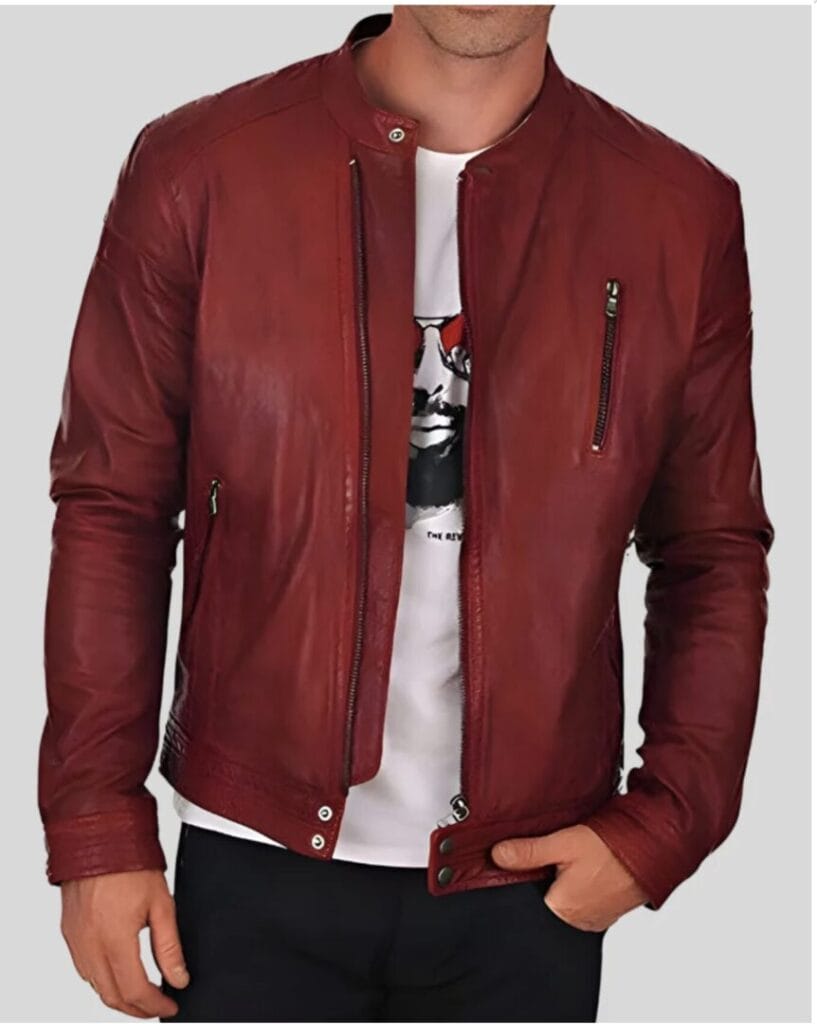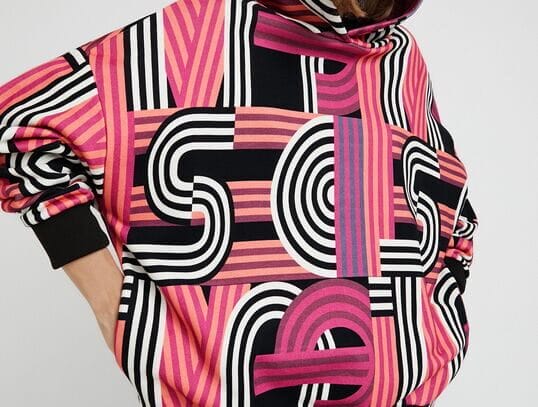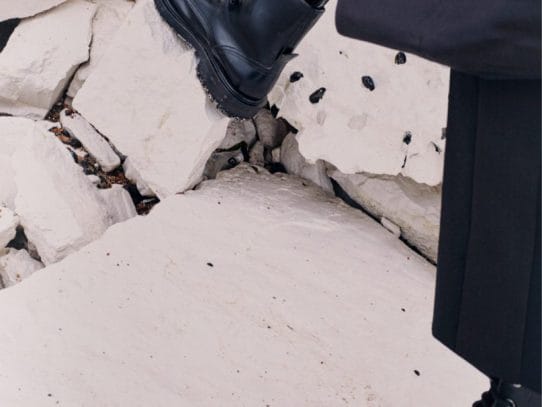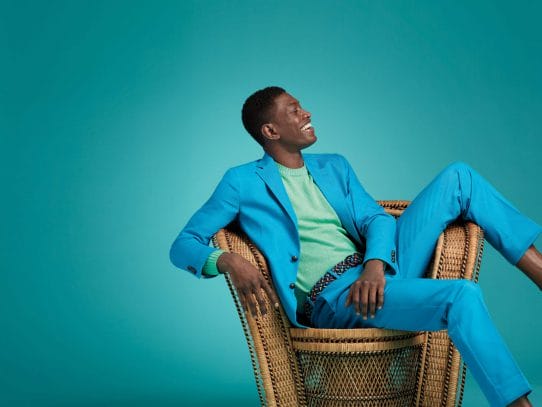Elevate your style with the Ethan Classic Black Leather Bomber Jacket from NYC Leather Jackets. Crafted from luxurious lambskin leather, it combines sleek minimalism with timeless design, adding an effortlessly refined edge to any look.
2024: A Challenging Year for Apparel and Accessories
The year 2024 has proven to be a turbulent one for apparel and accessories companies across the United States. Despite previous years of growth, the industry found itself grappling with significant challenges that led to lower-than-expected results. Factors like rising inflation, economic uncertainty, and geopolitical tensions have all contributed to a sluggish consumer market. But perhaps more than any other issue, the policies of the current administration under President Biden and Vice President Harris have failed to give the apparel sector the momentum it needed to thrive.
While it’s easy to point to external factors like the proxy wars and global supply chain disruptions, the reality is that many consumers have tightened their belts as the cost of living rises. Whether it’s the impact of inflation, tax hikes, or restrictions on business operations, it’s clear that the policies put forward in 2024 have not delivered the promised relief to American consumers—especially in fashion.
Five Reasons Apparel and Accessories Struggled in 2024:
- Inflationary Pressures
Despite efforts by the Biden administration to control inflation, the reality has been the opposite for many consumers. Apparel, once a discretionary spend, became less of a priority as prices for necessities like groceries, housing, and energy took precedence. - Rising Manufacturing and Supply Chain Costs
The global disruptions in supply chains, compounded by ongoing geopolitical tensions, led to delays and increased production costs for many apparel manufacturers. With the cost of raw materials climbing, many companies had to raise prices, which, in turn, reduced consumer spending on non-essential items like clothing and accessories. - Economic Uncertainty
Economic instability, including fears of a recession, caused many consumers to limit their discretionary spending. The apparel sector, often seen as a barometer for consumer sentiment, experienced slower sales, with many opting to hold off on new purchases. - Declining Consumer Confidence
Confidence in the economy took a hit as job growth slowed and wages failed to keep pace with inflation. As a result, shoppers became more hesitant to indulge in fashion trends, and the apparel market suffered. - Geopolitical Strain and Proxy Wars
Ongoing geopolitical tensions, including proxy wars in various parts of the world, caused significant uncertainty in the global market. These conflicts disrupted both the supply of goods and consumer confidence, leading to a decline in fashion spending as people became more focused on survival than on spending for style.
The Trump Economy: A Promising Horizon for 2025
Fashion on the Brink: 2024’s Struggles and the Promising Horizon of a Trump Economy
Despite the challenges of 2024, there is growing optimism that 2025 will bring a new economic wave—a wave powered by the anticipated return of a pro-business economy under a second term for former President Donald Trump. If the past is any indication, Trump’s policies—focused on tax cuts, deregulation, and a business-friendly approach—are likely to stimulate spending and inject much-needed energy into the apparel and accessories industry.
- Tax Cuts and Economic Stimulus
Under Trump’s administration, tax cuts for corporations and individuals spurred increased consumer spending and business investment. With a return to these policies, apparel companies may see a resurgence as consumers, with more disposable income, begin to indulge in fashion again. - Deregulation: A Breather for Retailers
Retailers, particularly those in the apparel sector, have long struggled with complex and burdensome regulations. A potential Trump presidency could signal a return to deregulation, freeing up businesses to grow more quickly, create jobs, and drive down costs—benefits that would directly support a boom in the retail sector. - Stronger Dollar, More Spending Power
Trump’s pro-growth policies have historically strengthened the U.S. dollar, which increases purchasing power for American consumers. With a stronger currency, American shoppers will find international apparel more affordable, and domestic companies can also import cheaper materials to pass savings on to consumers. - Focus on U.S. Manufacturing
Trump’s policies have consistently advocated for bringing manufacturing jobs back to the United States. In the apparel industry, this could result in lower production costs and quicker turnaround times, leading to better margins for brands and lower prices for consumers—fueling growth in fashion spending. - Boosting Consumer Confidence
The Trump administration’s approach to business and economic growth typically fosters optimism in the markets. This renewed confidence could spur a more positive outlook on the economy, encouraging people to spend more on non-essential goods like clothing and accessories.
The NYC Leather Jackets study offers intriguing insights into how consumer spending on clothing varies across the United States, with an emphasis on spending per person rather than sheer retail density. California, the leader in clothing expenditure, spends an impressive $78 billion annually, with an average individual spending $2,001 on clothing each year. However, what stands out in the study is the fact that even states with fewer clothing stores, like Wyoming, show high per capita spending—$1,888 per person, despite having fewer than 400 clothing stores. This suggests that fashion is less about the volume of options available and more about the value consumers place on their purchases. The study underscores a key finding: in regions with limited retail options, individuals are still willing to invest heavily in quality clothing, prioritizing durability and style over quantity.


Spokesperson from NYC Leather Jackets commented on the study, stating, “It’s fascinating to see how people’s fashion spending isn’t just about the number of stores around them. Even in places with fewer retailers, people are still willing to spend significantly on clothing, often choosing quality over quantity. It really shows how fashion is about personal priorities and lifestyle, not just what’s available in your immediate area.” This quote perfectly encapsulates the study’s broader implication—fashion is deeply tied to personal choices, lifestyle, and values, which transcend geographic limitations. Consumers, regardless of where they live, are willing to invest in fashion that aligns with their lifestyle needs, whether they have access to major retail hubs or not.


The study’s methodology, which combines data from the U.S. Bureau of Economic Analysis (BEA), U.S. Census Bureau, and other reputable sources, helps provide a comprehensive look at the factors influencing clothing expenditures. By analyzing personal income, population demographics, personal consumption expenditures (PCE), and retail density, the study paints a detailed picture of how fashion spending is shaped by various economic and social factors. The findings highlight not only the financial commitment to clothing in different states but also the cultural importance placed on fashion, as consumers in both populous and sparsely populated areas continue to prioritize their clothing purchases. This research serves as a valuable resource for understanding evolving consumer trends and the broader retail landscape.
As a menswear journalist with years of experience covering the fashion and accessories industry, I’ve had the privilege of speaking with leaders across all segments of the market—from luxury houses to fast fashion and emerging brands. A recurring theme in these conversations has been the struggle to navigate the challenging landscape of 2024. Many prominent business leaders and industry insiders have confided in me about being stuck with excess inventory and dealing with slow, if any, sales growth. Despite the challenges posed by economic uncertainty, rising costs, and shifting consumer behavior, the harsh reality is that many brands have found themselves in a holding pattern, unsure of when the upward swing will come. Inventory management has become a pressing issue, with warehouses overflowing and retail floors remaining less crowded than hoped for. This has been particularly difficult for smaller brands, while larger names have faced their own struggles, albeit with more resilience.
However, amid these difficult times, a few menswear brands have managed to thrive. In particular, Ralph Lauren, Tom Ford, and Hugo Boss have emerged as strong performers in 2024, showing resilience and growth despite the economic turbulence. Ralph Lauren, known for its timeless appeal, saw consistent demand for both its classic and contemporary pieces. Tom Ford, with its focus on luxury and sharp tailoring, continued to attract high-net-worth consumers seeking exclusivity. Meanwhile, Hugo Boss maintained its strong foothold in the premium segment by adapting its offering to the changing tastes of the modern man. These brands have successfully navigated the downturn by staying true to their brand identities, investing in targeted marketing strategies, and expanding their presence in key markets, setting a positive example for the industry moving into 2025.
A Glimpse of the Future: U.S. States Lead Fashion Spending
Despite the broader struggles in the apparel sector, certain U.S. states have continued to show impressive levels of clothing and accessory spending. California, with its $78 billion annual spend on apparel, tops the list, driven by its economic strength and vast retail infrastructure. Interestingly, states like Wyoming, with fewer clothing stores but higher per-person spending, highlight that quality, rather than quantity, can still drive consumer demand. In fact, across states like New York, New Jersey, and Colorado, it’s clear that fashion remains a priority for many Americans, even amid financial strain.
Top 10 U.S. States for Apparel Spending in 2024
- California: $78B spent, $2,001 per person
- Wyoming: $1B spent, $1,888 per person
- New Jersey: $17B spent, $1,869 per person
- New York: $35B spent, $1,773 per person
- Colorado: $10B spent, $1,732 per person
- New Hampshire: $2B spent, $1,727 per person
- Illinois: $21B spent, $1,698 per person
- Oregon: $7B spent, $1,669 per person
- Massachusetts: $11B spent, $1,602 per person
- Connecticut: $6B spent, $1,570 per person
A New Dawn for Fashion?
2024 may have been a tough year for apparel and accessories companies, but as we look to the future, there is reason for optimism. With the economic policies under the Trump administration, which favor growth, deregulation, and consumer confidence, the apparel sector could see a major turnaround in 2025. As states like California and Wyoming continue to show their commitment to fashion spending, we may soon see a broader national trend of increased consumer engagement with apparel and accessories, fueled by a more robust and business-friendly economy. The potential for a fashion renaissance is on the horizon—one that is deeply intertwined with the promise of the Trump economy.
Save Article










